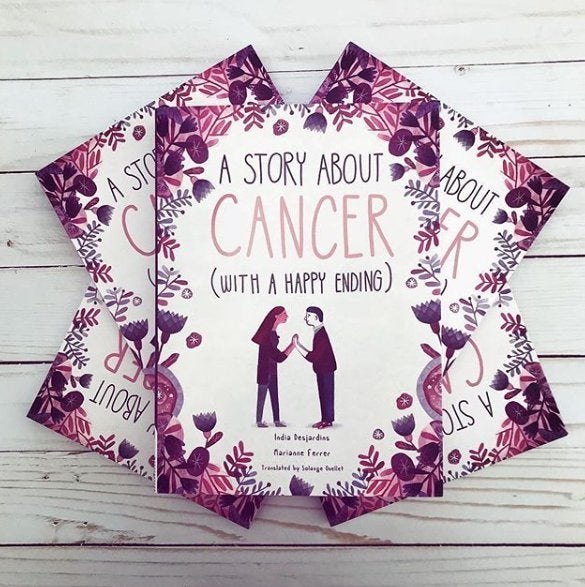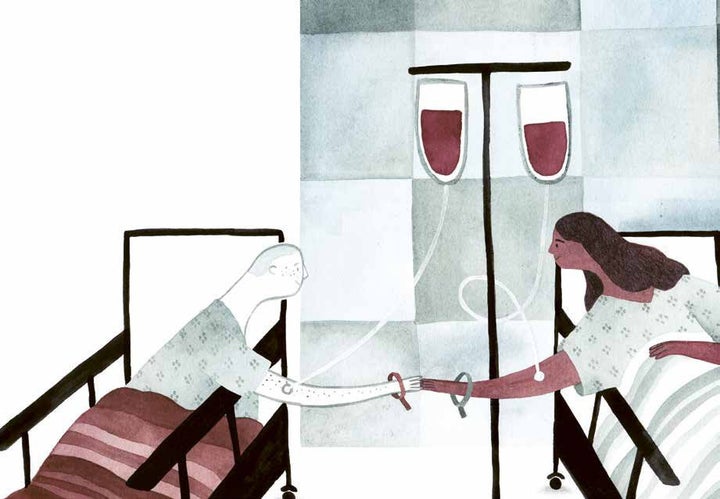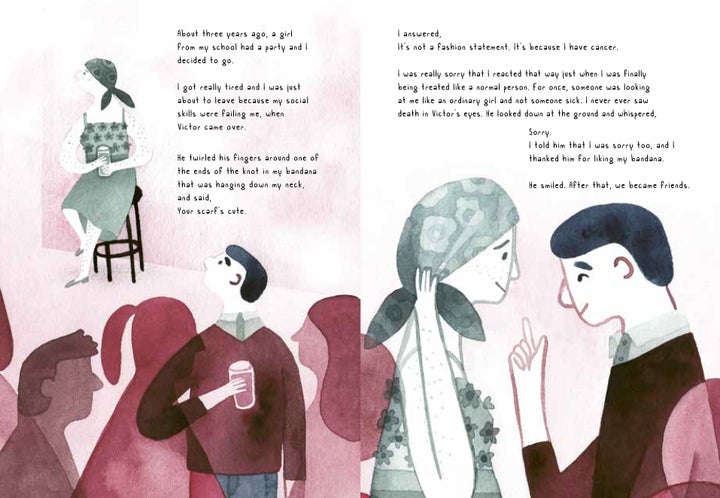
Do children need to grapple with the idea of death? It is an intriguing question, given how so much of parenting revolves around the need to protect. This can be in the form of cocoons within which children are to be raised, safe from thorny issues that adults cannot ignore. And yet, these shelters can shatter overnight, taking with them the illusion of control we spend years trying to create. Looming large is the threat of an accident or an illness without a cure, and nothing frightens us more than the aberration called cancer.
French-Canadian writer India Desjardins is very clear about the tale she wants to tell in A Story about Cancer (with a Happy Ending). The graphic novel opens with an unnamed 15-year-old suffering from leukemia, waiting to find out how much time she has left after a five-year battle with the disease. The idea for the book came from a patient who wanted a story that would end happily, and Desjardins obliged. What she has done, in the process, is expose not just how difficult dealing with cancer is for everyone involved, but how our unpreparedness manifests itself in responses that consistently fall short.

The story does end happily, but the path to that conclusion is ultimately more rewarding than the book’s closing pages. It is a path fleshed out through flashbacks, characters weaving in and out of the teenager’s life, and with illustrations by Marianne Ferrer who evocatively uses colour and abstract images to convey how unfathomable a situation like this really is.
Desjardins wisely creates an unnamed protagonist, enabling the reader to empathise with her moods and hard-won wisdom more fully. How do you explain mortality to a child? How does a child grasp the idea of a life with limitations? How does one justify the fairness of an arbitrary fault in one’s genes that determines who must survive and who must give up? These are some of the difficult questions the book raises with a sensitivity that makes it appropriate for people of all ages.
One of its most pertinent points, for me, was how great the distance can be from what a parent hopes to convey and what a child chooses to receive. When the girl’s mother tells her how strong she is, for instance, she responds by asking if not getting well may disappoint her parents. It is an unusual perspective, and Ferrer compliments it with drawings that are almost dream-like, throwing into effect how unprepared we are to tackle death even in the rare event of it being foretold.
Nestled at the heart of this sensitive account is a love story between the patient and her 15-year-old boyfriend, who occupies her mind despite staying away from the more prosaic aspects of her convalescence. Her relationship with him reminds us that this is also a tale about teenagers being forced to confront an idea not of their making.

“I think about everything I’ll miss if they tell me I’m going to die,” says the girl. Her list includes family, TV shows she will never see the end of, the starry sky, and “kissing Victor, Victor’s eyes, Victor’s voice, Victor’s smell, Victor’s hands... Victor.” If that doesn’t sum up the preoccupations of our own teenage years, what does?